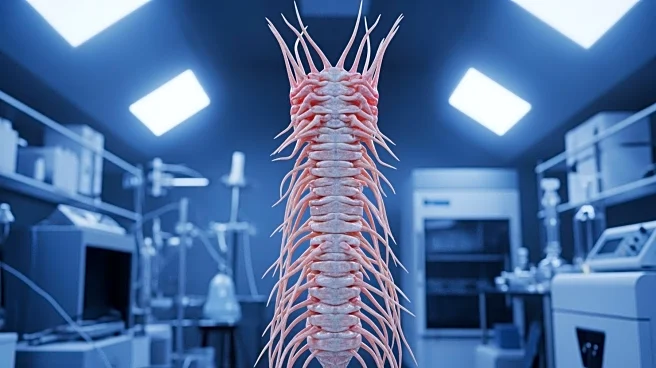What's Happening?
A recent study has introduced engineered thoracic spinal cord organoids (enTsOrg) designed for transplantation to aid recovery after spinal cord injuries (SCI). These organoids are developed using induced pluripotent stem cells (iPSCs) treated with layered
double hydroxide (LDH) to promote differentiation into thoracic segment-specific neurons. The study highlights the potential of these organoids to enhance neuronal survival, differentiation, and maturation, leading to improved functional integration and restoration of motor functions. The enTsOrg demonstrated a higher degree of neuronal maturation and exhibited robust neural signaling, making them a promising tool for SCI recovery.
Why It's Important?
The development of enTsOrg represents a significant advancement in regenerative medicine, particularly for individuals suffering from spinal cord injuries. By mimicking the thoracic spinal cord's cellular composition and characteristics, these organoids offer a potential therapeutic approach to restore motor functions and improve the quality of life for SCI patients. The study's findings suggest that enTsOrg can facilitate the reconstruction of neural circuits and promote signal conduction, which are critical for motor and sensory function recovery. This innovation could lead to new treatment strategies and improve outcomes for patients with severe spinal injuries.
What's Next?
Future research will likely focus on optimizing the transplantation process and further understanding the long-term integration and functionality of enTsOrg in living organisms. Clinical trials may be necessary to evaluate the safety and efficacy of this approach in human patients. Additionally, researchers may explore the potential of enTsOrg in treating other neurological disorders or injuries, expanding the scope of regenerative medicine applications.
Beyond the Headlines
The ethical implications of using stem cell-derived organoids for transplantation need careful consideration, particularly regarding consent and the potential for unforeseen consequences. Furthermore, the long-term effects of such treatments on patients' health and well-being must be thoroughly investigated to ensure safety and efficacy. The development of enTsOrg also raises questions about accessibility and affordability, as these advanced therapies may initially be available only to a limited population.
















